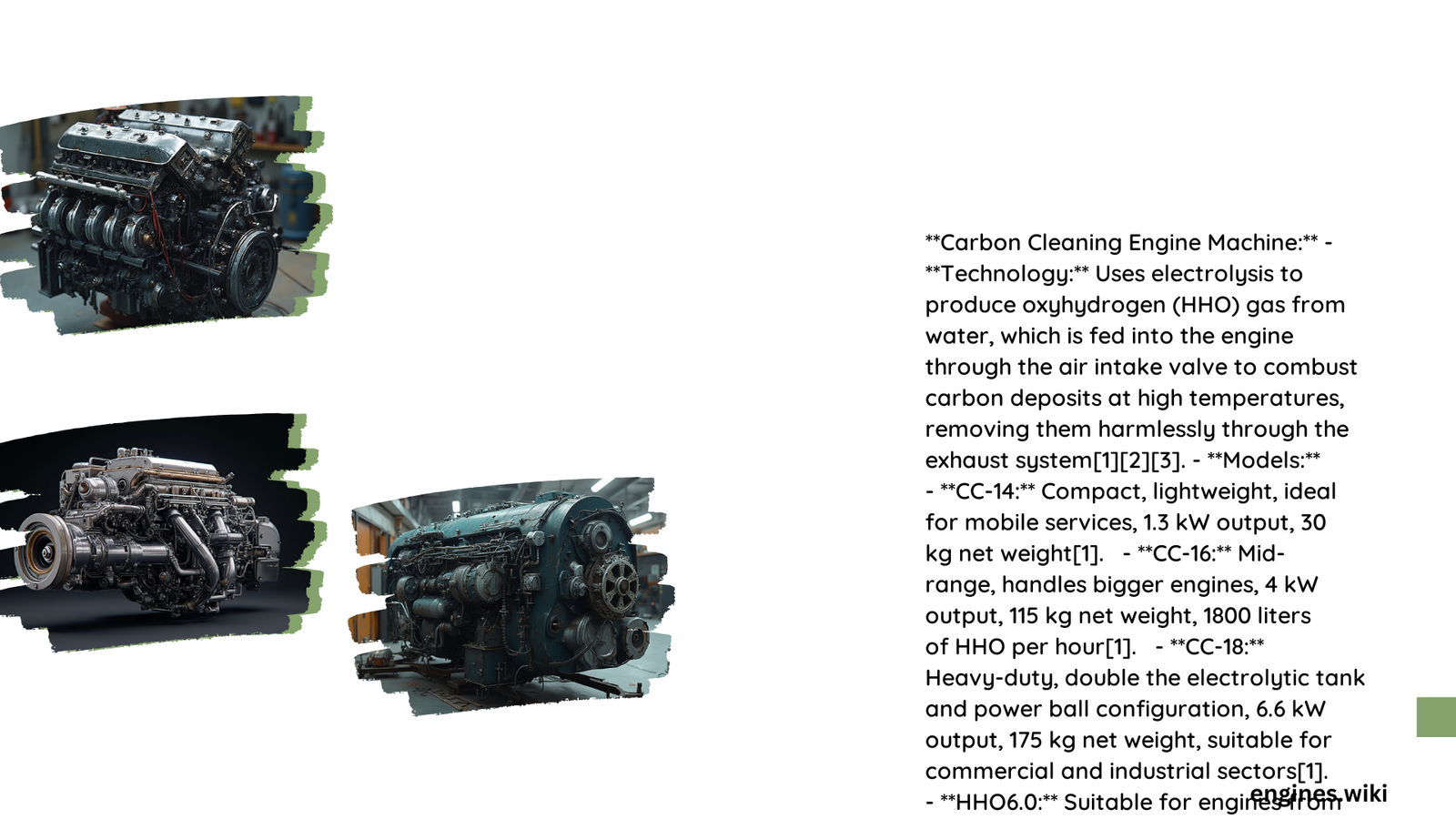Carbon cleaning engine machines are innovative devices designed to remove carbon deposits from internal combustion engines. These machines use a mixture of hydrogen and oxygen gases to break down and eliminate carbon buildup, improving engine performance, fuel efficiency, and reducing emissions. The process is non-invasive, environmentally friendly, and can significantly extend the life of an engine. Carbon cleaning machines are becoming increasingly popular among automotive professionals and enthusiasts alike, offering a cost-effective solution to common engine problems.
What is a Carbon Cleaning Engine Machine?
A carbon cleaning engine machine, also known as an HHO carbon cleaner, is a device that generates a mixture of hydrogen and oxygen gases through electrolysis of water. This gas mixture is then introduced into the engine’s intake system while the engine is running. The hydrogen and oxygen react with carbon deposits in the combustion chamber, breaking them down into smaller particles that are easily expelled through the exhaust system.
How Does a Carbon Cleaning Engine Machine Work?

- The machine generates HHO gas through electrolysis
- The gas is introduced into the engine’s intake system
- The engine runs for 30-60 minutes, allowing the gas to circulate
- Carbon deposits are broken down and expelled through the exhaust
What Are the Benefits of Using a Carbon Cleaning Engine Machine?
- Improved fuel efficiency
- Reduced emissions
- Enhanced engine performance
- Extended engine life
- Non-invasive cleaning process
How Often Should You Use a Carbon Cleaning Engine Machine?
The frequency of carbon cleaning depends on several factors:
- Vehicle age
- Driving habits
- Fuel quality
- Engine type (diesel or petrol)
Generally, it’s recommended to perform carbon cleaning every 30,000 to 50,000 miles or as part of regular maintenance.
What Types of Carbon Cleaning Engine Machines Are Available?
| Type | Description | Suitable For |
|---|---|---|
| Portable Units | Compact, easy to use | DIY enthusiasts, small workshops |
| Professional Units | Larger, more powerful | Auto repair shops, dealerships |
| Industrial Units | High capacity, continuous operation | Fleet maintenance, large-scale operations |
How Much Does a Carbon Cleaning Engine Machine Cost?
The cost of a carbon cleaning engine machine can vary widely:
- Entry-level portable units: $500 – $1,500
- Professional-grade machines: $2,000 – $5,000
- Industrial units: $5,000+
Factors affecting price include:
– Machine capacity
– Build quality
– Additional features (e.g., diagnostics, multiple cleaning modes)
What Are the Potential Drawbacks of Using a Carbon Cleaning Engine Machine?
While carbon cleaning machines offer numerous benefits, there are some considerations:
- Initial investment cost
- Requires proper training for effective use
- May not be suitable for all engine types or conditions
- Results can vary depending on the extent of carbon buildup
How to Choose the Right Carbon Cleaning Engine Machine?
Consider the following factors when selecting a carbon cleaning machine:
- Intended use (personal, professional, or industrial)
- Frequency of use
- Types of vehicles to be serviced
- Budget constraints
- Manufacturer reputation and support
What Safety Precautions Should Be Taken When Using a Carbon Cleaning Engine Machine?
- Always follow manufacturer instructions
- Wear appropriate personal protective equipment (PPE)
- Ensure proper ventilation in the work area
- Never leave the machine unattended during operation
- Regularly inspect and maintain the equipment
Can a Carbon Cleaning Engine Machine Damage My Engine?
When used correctly, carbon cleaning machines are safe for most engines. However, there are some risks:
- Improper use can lead to engine damage
- Extremely high levels of carbon buildup may require additional cleaning methods
- Some newer engines with specific technologies may not be suitable for this cleaning method
Always consult with a professional or the vehicle manufacturer if you’re unsure about using a carbon cleaning machine on your engine.
What Are the Alternatives to Using a Carbon Cleaning Engine Machine?
While carbon cleaning machines are effective, there are alternative methods:
- Chemical cleaners and additives
- Manual cleaning (disassembly and scrubbing)
- Walnut shell blasting
- Ultrasonic cleaning
Each method has its own pros and cons, and the best choice depends on the specific engine condition and requirements.
How to Maintain a Carbon Cleaning Engine Machine?
Proper maintenance ensures the longevity and effectiveness of your carbon cleaning machine:
- Clean the machine after each use
- Regularly check and replace filters
- Inspect hoses and connections for wear or damage
- Keep the electrolyte solution at the correct level
- Store the machine in a clean, dry environment
What Industries Benefit Most from Carbon Cleaning Engine Machines?
Carbon cleaning engine machines have applications across various industries:
- Automotive repair and maintenance
- Fleet management
- Marine engine maintenance
- Industrial equipment maintenance
- Power generation
These machines offer a cost-effective solution for maintaining engine performance and reducing emissions across a wide range of applications.
In conclusion, carbon cleaning engine machines offer a powerful and efficient method for maintaining engine health and performance. By understanding their operation, benefits, and proper use, both professionals and enthusiasts can leverage this technology to keep engines running smoothly and efficiently for years to come.
References:
1. https://www.optimal-automotive.co.uk/post/the-top-benefits-of-engine-carbon-cleaning
2. https://www.hhocarboncleaner.com/about/can-car-carbon-cleaner-improve-fuel-efficiency
3. https://www.carboncleaningmachine.com/benefits-of-hho
